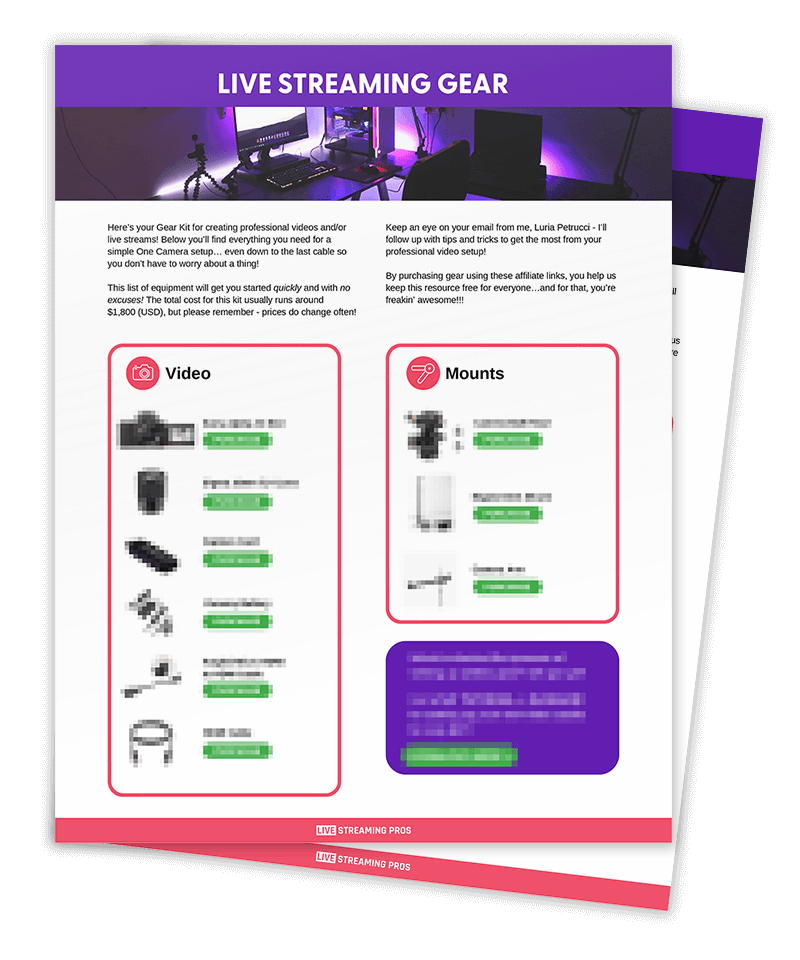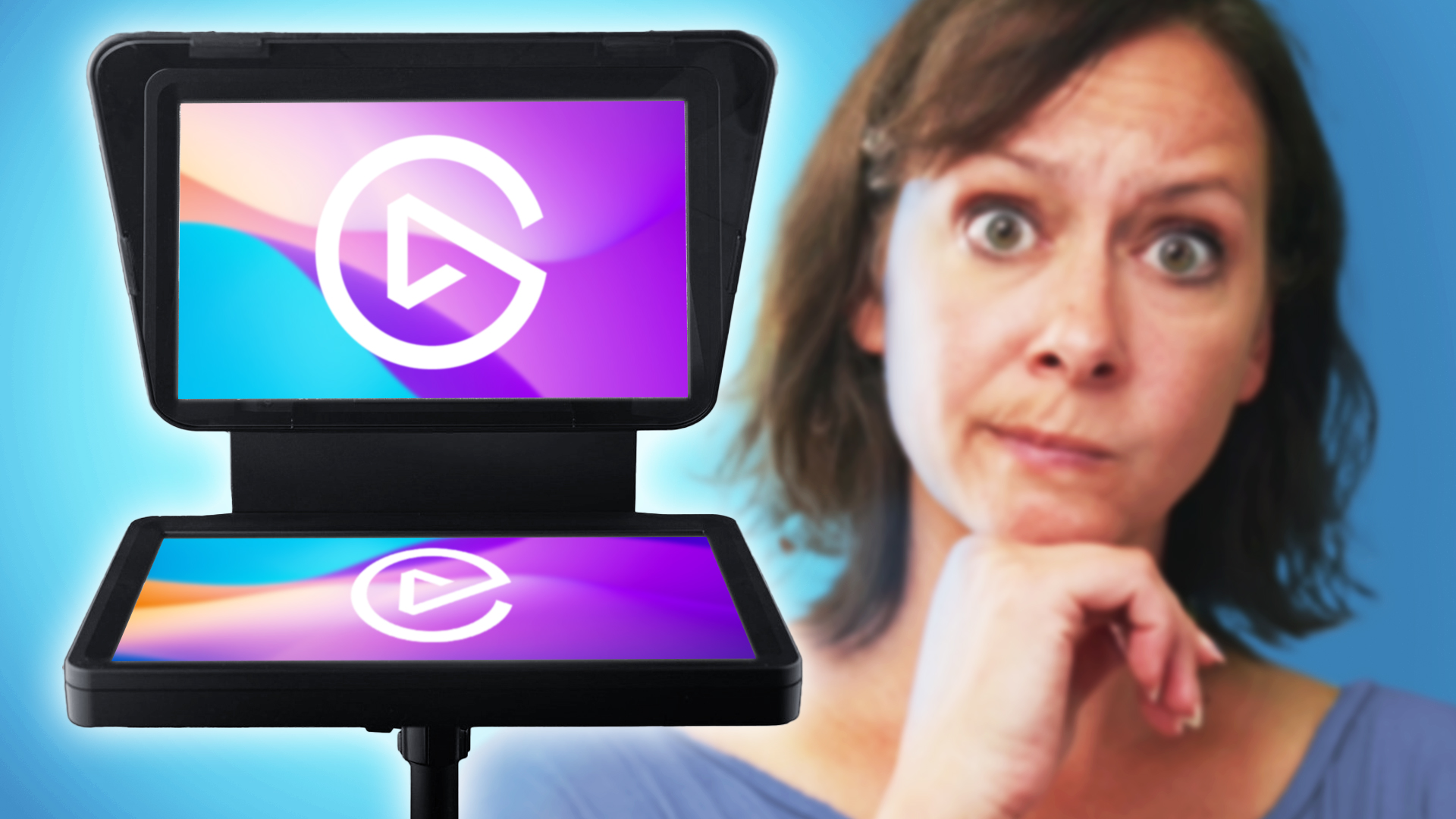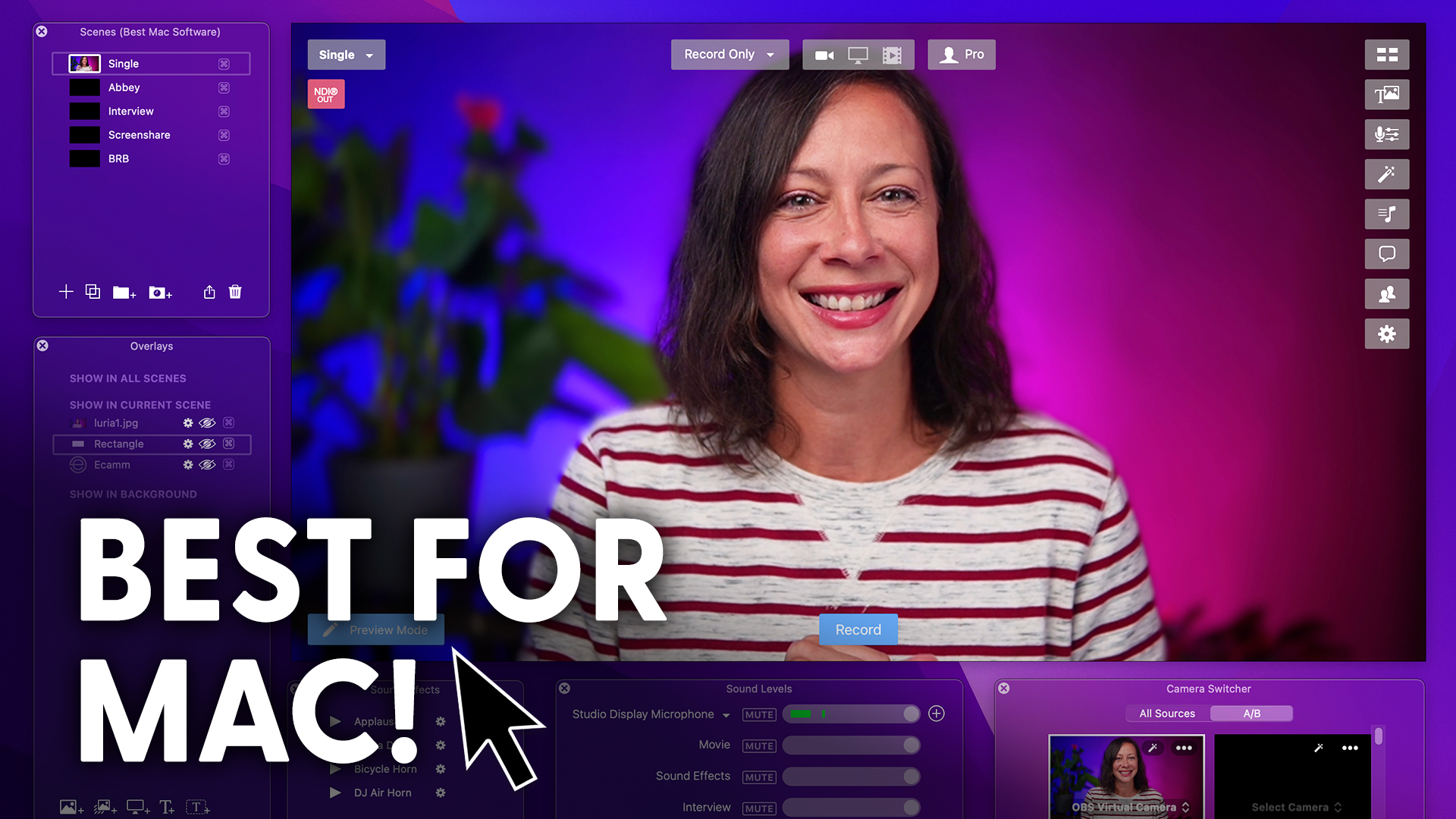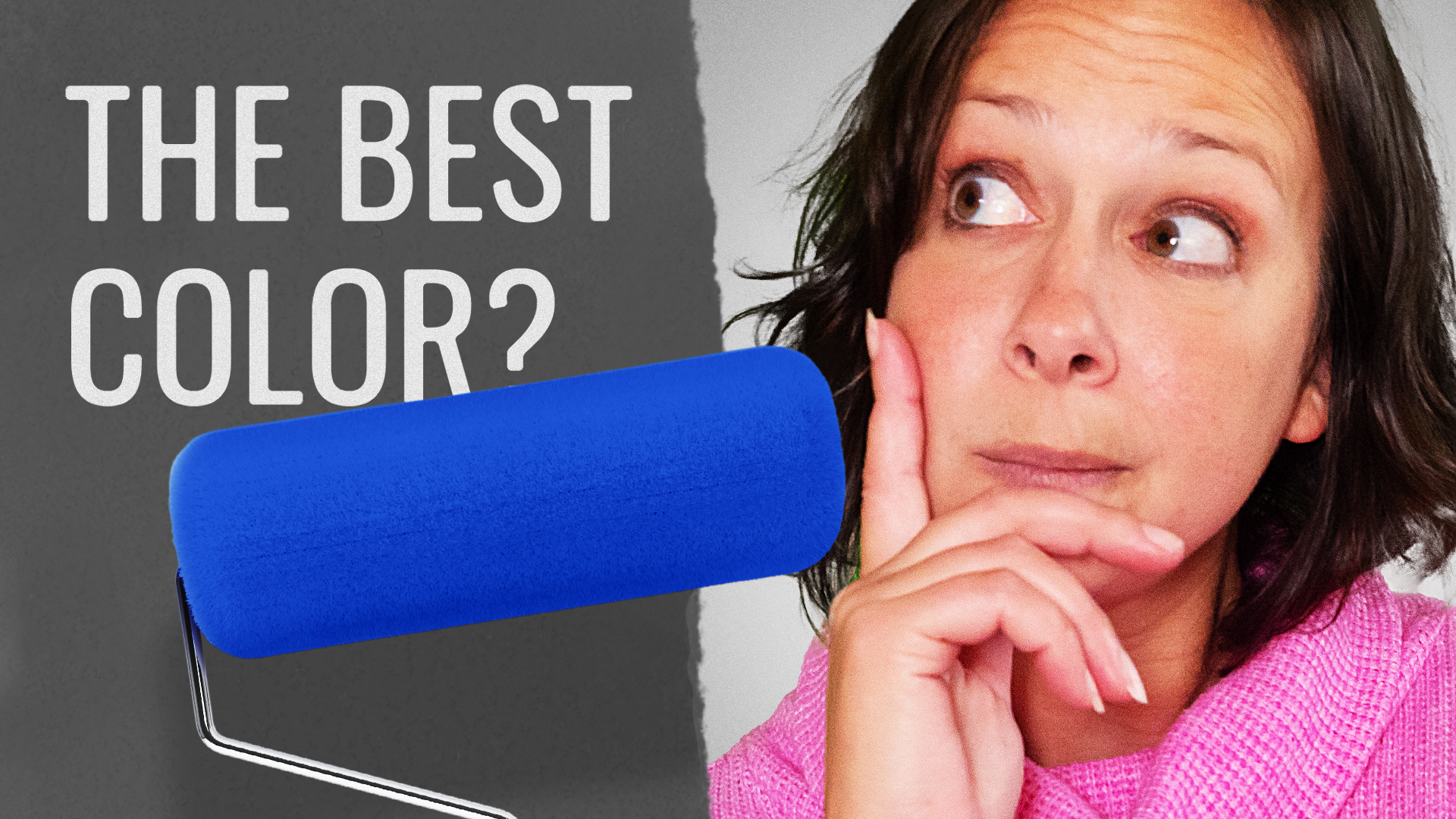What’s the best lighting for live streaming?
Well, we got you covered everything you need to know about lighting so that you make the right buying choices and so that you know how to set it up properly in your own space.
It’s lighting week around here.
So that means lots of lighting tips, tricks and tutorials to definitely check out the link in the description to dig in even deeper after this video.
Now, Ron Clifford is my guest today and he is an incredible portrait and branding photographer.
His work is spectacular.
And as a mentor, he helps bring out your full potential as a photographer, videographer and more.
So let’s dig in.
You know, I think people get so caught up in lighting.
It’s one of the most frustrating things that people can experience when it comes to their video set.
Why is that?
That’s a great question. As a photographer, when I was new in photography, a lighting like studio lighting or flash photography was really intimidating because most of us have the experience of popping up the flash on a camera and taking a picture.
And it’s like completely blown out, like in a reception hall in the background black.
And we look horrible in the colors. Wrong.
And so if that’s our first experience with lighting it, it’s intimidating.
And so I think that comes from the point where there’s so many terms and tools
that we feel confused and so we’re afraid to move forward.
Yeah, that confusion stops us.
It stops us in our tracks.
So today we’re going to break it all down to make it a lot simpler and easier for people to understand.
Yes.
And everybody has a space they’re working with and everybody’s space is different.
So one person’s advice may work for them, but you’ll have to alter it to fit your space and your style.
And the first two terms I want to use are the idea of soft light and specular light.
I could use the term hard light,
but people see that as a negative and specular light isn’t bad.
They’re just different styles of lighting.
So, for example, I use a softbox.
It’s a very large light source and it creates soft lighting. Like an overcast day.
All the clouds in the sky create this big softbox.
It’s why we love window lighting.
Oh, I love window light.
It’s because it’s big and soft, right?
Women tend to love the feeling of the soft light just because it, it doesn’t, it doesn’t show our pores.
So that brings that brings us to specular light, ring lights or smaller led light panels are specular and it means they are more like the sun.
You go on a sunny day in the sun shines bright in your face and it does reveal every little thing.
And so if you’re a model, you got amazing skin.
This is beauty dishes and ring lights were designed for that kind of specular light, which can give a great glow to the skin and really give a good look.
But it comes with the problem that if you have oily skin or shiny skin or you have imperfections that you’re not a particular fan of, it’s going to reveal them.
And so soft lighting, especially if you bring it around right in front of you, really softens all those little details.
In terms of pros and cons between the soft light and specular light.
The specular light, you’re saying is considered a ring light, is that right?
So, yeah, that’s one of them. Yeah.
So that’s a low profile.
Whereas when you go soft light, typically you’re having you’ve got a bigger profile.
So if people have a small amount of space, then they tend to go for a ring light or a smaller light, but they don’t know the difference between the two and what they’re getting themselves into.
I would never recommend for a front light some people sell them and say, OK, put this on your cell phone.
It’s this big, it’s a ring.
It’s going to be great.
Well, know people who have probably purchased it found out that wasn’t true.
And if you did purchase it, don’t don’t sit here and freak out.
Right.
And if you have to sit and wait to get into this, because every light has to use, don’t think you’ve done a terrible thing.
Throw it out the window. Exactly.
Please. I know how people react.
So I just wanted to say, OK, so if you want to get your look, there’s five principles and you really don’t need all of them.
But I’m going to talk about five because there’s a couple at the end you can trip up on depending on your camera and how it works.
So the first one is that size matters the size of your light source matters.
He just said that first. I started that way.
We have four more to go.
But when it comes to lighting, the larger the light source or the closer the light source.
So it appears larger, the softer the light.
So number two is distance and this goes along with size if I have a really large light source, but it’s very far away.
It starts looking smaller and smaller and smaller and smaller, like the sun.
It’s like four hundred times bigger than the moon and it’s still a speck, right, because it’s so far away.
But if the sun were close, it would be all you saw.
Direction is where the light source is.
If my light source is directly in front of me, it’s going to show up in my glasses.
It’s not going to create a lot of shadows, but you’re going to see all the lighting.
Like, if I tip my head up, you’ll see the lighting in my glasses.
And so the direction of the light will change the look entirely.
Brightness now this one’s a little tricky.
Most of the cameras that we’re using, like if you’re in Live Streaming Pros and you’ve upgraded to, say, a mirrorless camera like a Sony, it’s going to automatically try to adjust if it’s on auto for brightness.
And so it depends on whether we’re using auto or manual settings, how much brightness matters or the control of brightness on our light.
The last one is color temperature.
Almost all cameras will automatically adjust for color temperature.
When they come out of the box, they’re set to adjust for what they call white balance.
And most people don’t ever have to worry about that.
But some people, the camera can’t read the lighting right in the lighting is pink or their lighting is green.
And then we have to dive a little deeper into color temperature.
So those are the five high level things the size, the distance, the direction, the brightness and the light’s color temperature.
The most important light to consider, though, is your main light.
That’s the number one.
All this other stuff you build as you go, like it’s all fluff.
It’s all extras later on.
Let me ask you a question.
Is it OK to start with a single main light?
And that’s it.
Absolutely, it is, absolutely. I’ll give you an example,
I’m just going to turn off my colored lights in the background like this is me in my studio with one ceiling light on and window light and my one light.
It’s not terrible.
No, that’s that’s an artistic look right there.
Yeah, so it’s got that moody look, which fits you perfectly.
I’m going to I’m going to pop out screens and I’m going to show you a 3D model, exactly what my setup kind of is.
So there you go.
So what this is, is a 3D model of my lights and kind of my distance.
And so what I have, you can see there’s my camera and that’s not me.
That’s my my model for the day.
Obviously, my hair.
You grew hair.
Yeah, but there’s a ring right over here where I use my ring light, a main light.
It’s a little bit out of the way, but I’m going to show you where mine sits.
And if you look over here, this is the light that’s being created.
So you can see that this is actually if you’re looking when we’re finished with the screen share, you look at me, you’re going to see exactly this lighting on me.
And so if if this, on the other hand, were taller, it would become more like a hair light and I could turn it down and I could move it.
In behind it come more like what Luria has, and so now we see it on the top, just like Luria just that’s it.
It’s almost the same.
That’s so fricking cool!
Yeah, I’m going to point mine upward.
This is especially useful if you have only one light.
So this is helping you answer that question.
Only one light.
See how it’s hitting the ceiling?
Yeah, so if it’s hitting the ceiling.
And it’s on you.
And we just that.
It’s also going to help light the background.
And then I can turn my light up little there and see how I lit my background.
Yeah, background got lighter and that’s because I pointed it more toward the ceiling and let the light spill on to my face.
This is my setup.
If you wanted to repeat my lighting, this is how to do it right here.
Let’s talk about hot spots.
I think this is something very important,
very important that people need to know, because when I know I see it all the time, people have hot spots and they don’t know that it’s.
Not good.
So hot spots are created when the light source is either too small or a large source is too far away, and the smaller the source gets, the more specular it becomes.
You don’t have oily skin today, so you can’t make the hot spot shine.
Now, I’ve got like some how spots right here.
It looks pretty good.
Let’s look at Luria, Luria’s shiny cheeks.
And so she’s getting hot spots.
And there’s a couple of ways to solve that.
No one is literally antishine powder.
I use it in the studio all the time, but I don’t.
I have very dry skin.
I don’t have that happen to me.
But the larger the light source, the less shine is going to be a parent.
And again, getting your light source up,
and if that source is large and far away, it’s still going to create shining spots.
It’s just a matter of the size of the light.
And you have really if you have an issue with oilier shiny skin, a specular light may not be the right source for you.
If you will only know by experiment, but if you’ve already bought the specular light, it can always be your kicker.
Right. Yeah, it can always be that separator light, so you haven’t wasted any money at all, or it could light maybe the wall behind you, something that you’re going to notice.
And this is actually where things segue into color temperatures because people confuse brightness and color temperature.
Some people think, oh, that’s a really warm but it got a warm color temperature because it’s a bright light.
But they’re they’re not the same thing.
They’re two very different things.
And so what I want to point out is that color temperature is quite literally the color of the light and it goes in in Kelvins or Kelvin.
So it says if you put a light in, it says it’s 5600K daylight balance, light 5600K.
That’s the most common thing you’ll see.
So remember that number 5600K or sometimes 5500K.
Daylight balance lights are a Kelvin temperature that kind of matches outdoors.
You know, not full on midday sun, but just outdoor kind of life, right?
And that’s the color of the light. It’s not warm.
It’s not golden like sunset.
And it’s not cold or cool, like hard light on snow.
But the light on in my fixture is warm.
So that light off from the corner there, it’s warmer.
That’s because it’s a lower Kelvin temperature.
The lower the Kelvin, the warmer the light.
It’s not brightness, it’s warm and cool, like blue or amber.
It’s all about experimentation, personal preferences.
And playing, I think people put way too much pressure on themselves to have it perfect.
We’ve talked about that.
It doesn’t have to be perfect.
It just has to be personal and something that you enjoy looking at.
Right, because you’re creating an environment
for your audience and that environment should be what you want.
I chose the lighting of the space.
I chose to keep it light back there along with my front lighting, because I wanted to create a light, bright and airy kind of environment that matches my personality because I’m a little bubbly so that that’s what I wanted for my set.
So start there. What is it that you want?
What kind of environment do you want to create?
And we actually in this playlist that we have linked to in the description, we have videos about the environment and well, it’s all lighting a lighting playlist for you right here so you can dive into all of the other things as well.
You know, in wrapping up, what I would say is that.
Even though one of my specialties is lighting,
I was already very experienced at lighting when I joined Live Streaming Pros, but all the content that kind of went together like a puzzle piece for me allowed me to take those things I already knew and mix them with all the things I learned about cameras and about my Internet speed and about sets and help me level up my lighting.
So I just want to literally give a shout out to LSP and the great content that they’ve helped me with my own Live Streaming Pros.
So that’s the way I would I would say thank you.
Because the audio or audio is coming in through the lights…
Lighting is really improved.



